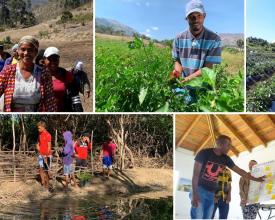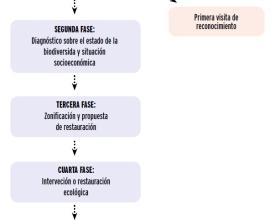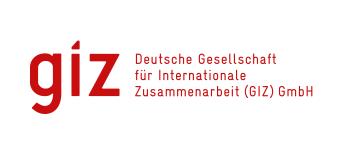
Ecological Assessment: A Tool for Landscape Restoration in Dominican Republic
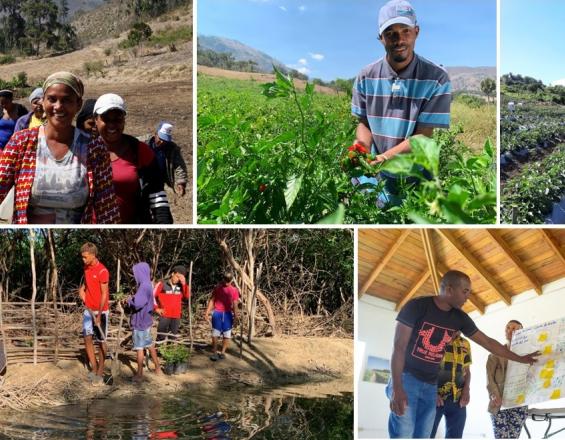
The Dominican Republic has worked on the restoration of degraded ecosystems and landscapes; it has created the National Program for the Restoration of Degraded Ecosystems and a Methodological Guide to accelerate restoration actions regulated by the Ministry of the Environment and Natural Resources.
This solution aims to present an ecological restoration model that includes methodological steps and protocols for the implementation of ecosystem and landscape restoration actions, as well as monitoring activities to determine the recovery levels of the intervened areas.
The solution proposes the following method: 1) Harmonize International Technical Concepts with National Legislation, 2) Elaborate a Diagnosis on the State of Biodiversity and Socio-Economic Situation, 3) Elaborate a Zoning Proposal and Restoration Plan, and 4) Develop a Follow-up and Monitoring Plan for the Implementation of Actions.
Context
Challenges addressed
- Develop an ecological restoration model that favors the creation of local alliances (government, civil society, private sector), and that complies with current national legislation according to the legal competencies that each actor in the areas of intervention possesses.
- To have a planning instrument for ecosystem and landscape restoration interventions that favors public and private investment, while at the same time distributing implementation responsibilities among the actors according to their competencies.
- To have a follow-up and monitoring tool for ecosystem and landscape restoration interventions that would be cost-effective and easy to apply by stakeholders in the territories.
Location
Process
Summary of the process
The Harmonization of International Technical Concepts to National Legislation (B1) facilitates the incorporation of international terminology in national processes and its application in the current national regulatory framework.
With the definition of B1, a diagnosis on the State of Biodiversity and Socio-Economic Situation (B2) is elaborated, which provides the necessary biological parameters to determine the current state of an ecosystem. With the data from B2, a Zoning Proposal and Restoration Plan (B3) is elaborated, where a selection of sites to restore and the measures to be used to recover the areas according to the scope, time and resources available to the interested parties is made.
Finally, a Follow-up and Monitoring Plan (B4) is developed, where the results obtained in the implementation of the measures proposed by B3 are measured.
Building Blocks
Harmonization of International Technical Concepts to National Legislation
The objective of this building block is to provide technical teams with tools that favor the restoration of ecosystems and landscapes according to international parameters and standards, while at the same time not entering into controversy or contradiction with institutional competencies and national legislation in force.
This process requires: 1) relating international processes in ecosystem and landscape restoration to the operational competencies of governmental institutions; 2) relating international technical terminology to the regulatory framework on which the operational competencies of governmental institutions are based; and 3) clarifying, adapting, modifying or adding new technical terminology to the technical instruments of governmental entities for their adoption and implementation.
Enabling factors
- Conduct a broad communication, awareness-raising and consultation process with the different stakeholders, both within (different directorates and units) and outside (different ministries, civil society actors and the private sector) the governing body in charge of ecosystem and landscape restoration.
Lesson learned
- These processes may require extensive technical discussions, therefore budgetary availability for the development of mediated learning materials to facilitate understanding among non-expert stakeholders and the execution of workshops at different local, sub-national and national scales should be taken into account.
Elaborate a Diagnosis on the State of Biodiversity and Socio-Economic Situation.
The objective of this building block is to provide technical teams with the biological parameters necessary to determine the current state of an ecosystem in order to determine the appropriate restoration measures to be implemented in that specific ecosystem.
The diagnosis of the state of the biodiversity is done by documentary review and field visits, where we perform: 1) identification of the site including the composition, structure, and different strata that make up the ecosystem, 2) description of the ecosystem services, 3) floristic composition, 4) diversity of vertebrate and invertebrate fauna groups, 5) presence of invasive species, and 6) identification of threats and degradation factors.
The socio-economic situation is carried out by documentary review and field visits, where the following is done: 1) identification of the current users of the site, 2) description of the productive activities carried out by the users, 3) clarification of the land tenure status of the site, 4) identification of local actors with presence in the territory, 5) identification of the potential local development with ecologically sustainable activities.
Enabling factors
-
The sites should be referably of high national interest for the provision of ecosystem goods and services for the population and the conservation of existing Natural Protected Areas that are legally endorsed.
-
Have resources available for the incorporation of additional analysis such as GIS and other technological tools, which facilitate the delimitation and rapid characterization of the sites to have a first approximation of the general conditions.
Lesson learned
- The process can be demanding due to the level of detail and interdisciplinarity required. Therefore, it is necessary to plan the time, human and material resources that will be used for the documentary, geographic and field analyses.
- Involve local stakeholders from the beginning to ensure the sustainability of the actions, take advantage of local knowledge and interest in the conservation of ecosystems for the benefits they obtain from them.
Elaborate a Zoning Proposal and Restoration Plan.
The objective of this building block is to provide the technical teams with the technical parameters to identify the sites where restoration should be carried out and the selection of effective actions for ecosystem recovery.
Zoning requires: 1) identification of areas for natural and assisted recovery, 2) areas for reforestation with native and endemic plants, and, 3) areas with potential for environmentally friendly productive activities.
The proposal for restoration actions includes: 1) the selection of activities to be implemented for each zoned area, 2) the estimation of resources needed to implement the restoration activities, 3) the distribution of responsibilities according to the competencies and resources available to the interested parties, and 4) the time required to implement actions taking into account the scope and resources available.
Enabling factors
- The quality of the previous diagnoses, the experience of the technical staff that accompanies these processes and the active participation of the stakeholders, facilitates decision making and the most cost-effective selection of restoration activities at the intervention sites.
Lesson learned
The ecosystem functions to be restored, as well as the ecological and social context, determine the type of activities to be chosen and the geographic area to be intervened:
- Where opportunities exist to enhance biodiversity at the landscape level, activities should concentrate on sites located in or around protected areas or other forests of high conservation value.
- Where degradation has led to ecosystem functioning failures, activities should be concentrated along riparian strips, steep slopes, etc.
- Where opportunities exist to improve human well-being and, in particular, to support income-generating activities, priority areas should be appropriate sites for the production of high-value species.
Develop a Follow-Up and Monitoring Plan
The objective of this building block is to provide technical teams with parameters for measuring the effectiveness of restoration actions in the field.
The monitoring plan should include elements to evaluate the following parameters: 1) degree of development of planted species and their response capacity, 2) changes in water patterns and abundance, 3) changes in biodiversity dynamics (presence and abundance), as well as in the disappearance of exotic and/or invasive species, 4) changes in the environmental conditions of the area, and 5) changes in land dynamics and use, as well as public use and community demands.
Enabling factors
- Social auditing favors accountability in the quality and quantity of public investment in the territories.
- Co-administration or co-management agreements favor accountability in the quality and quantity of non-governmental investment in the territories.
Lesson learned
- The creation of local governance platforms favors the creation of robust and transparent accountability systems.
- The data provided by the monitoring system should have a technical component (how have we progressed in the restoration of our area?) and a social component (what are the monetary and non-monetary benefits of the investments made?), so that the actors involved maintain a real and effective interest in contributing to the restoration of these sites.
Impacts
- An alliance between government, public enterprise and civil society has been generated to restore 500 ha and mobilized USD $401,302.00.
- Nine ecosystems or landscape units have been identified and characterized (mangroves, dry forest, dunes, salt marshes, agricultural areas, pine forests, riparian forest, wetlands, and broadleaf rainforest).
- Twenty-three endangered flora species protected by national legislation have been identified. Five endangered reptile species have been identified: two vulnerable, two endangered and one critically endangered.
- Three restoration plans have been developed with specific actions per ecosystem, validated by local governmental and non-governmental stakeholders.
- 15 people from local organizations that carry out local restoration actions have been trained and participated in the process of developing the restoration plan.
Beneficiaries
Government institutions, civil society organizations, forest communities, indigenous peoples and individual professionals who design, implement and/or evaluate ecosystem and landscape restoration projects.
Story
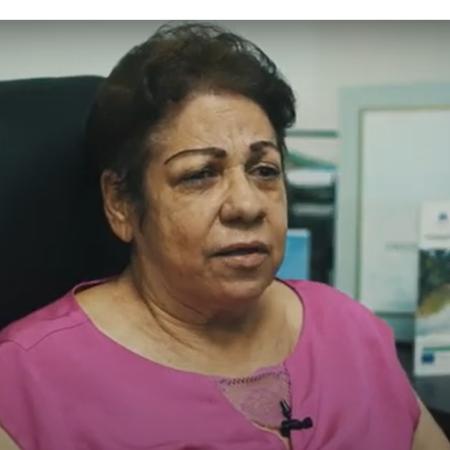
"We as a Ministry had the idea that we needed a methodological instrument, because we had protocols but we did not have it systematized with the project we saw the possibility of having an official document with all the steps for the ecological restoration that includes an ecological evaluation of the state of the biodiversity of the site, a zoning, what to do and how to do it in each zone".
Gloria Santana, Head of the Wildlife Department of the Ministry of Environment and Natural Resources of the Dominican Republic.

